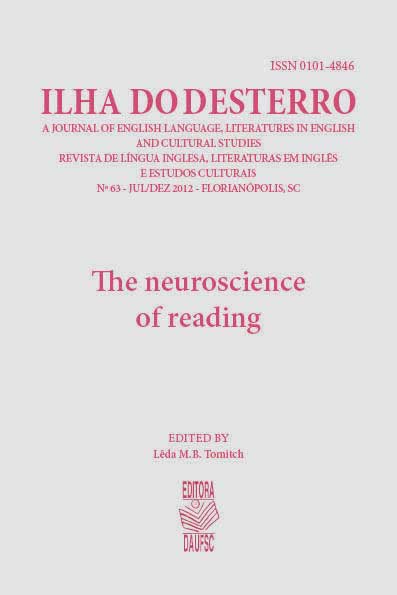When syntactic errors go unnoticed: an fMRI study of the effect of semantics on syntax
DOI:
https://doi.org/10.5007/2175-8026.2012n63p15Resumo
In our day to day conversations there are often times whenwe fail to notice syntactic errors. but why? in this study weconducted both a behavioral and an fMri study to address thisquestion. The results showed that participants were more likelyto fail to detect a morphosyntactic violation if the sentenceconstituents were semantically related to each other than if theywere unrelated. in addition, the related anomalous sentenceselicited stronger activation of the left inferior frontal gyrus. Threeseparate clusters of activation were observed encompassing ba44, ba 45/46 and one at the junction of the inferior frontal andprecentral sulci. While previous work has demonstrated thatsemantics information such as plausibility and world knowledgedoes not have a significant impact on comprehension, it doesaffect anomaly detection. one theory of language processing thatfit the results is “good enough” theory which suggests that we failto generate a complete representation of the input, particularlywhen the input describes plausible and/or familiar events.
Downloads
Publicado
Edição
Seção
Licença
A revista Ilha do Desterro publica artigos e resenhas inéditos, referentes as áreas de Inglês, Literaturas em Língua Inglesa e Estudos Culturais. Publica volumes mistos e/ou temáticos, com artigos e resenhas em inglês e português.
Autores mantém os direitos autorais e concedem à revista o direito de primeira publicação, com o trabalho simultaneamente licenciado sob a Licença Creative Commons Attribution que permite o compartilhamento do trabalho com reconhecimento da autoria e publicação inicial nesta revista.

This work is licensed under a Creative Commons Attribution 4.0 International License.



